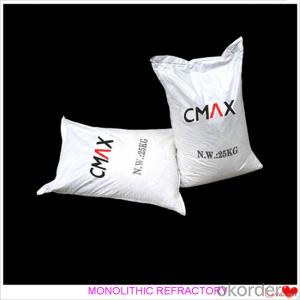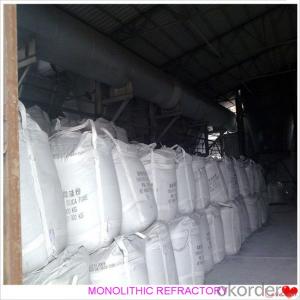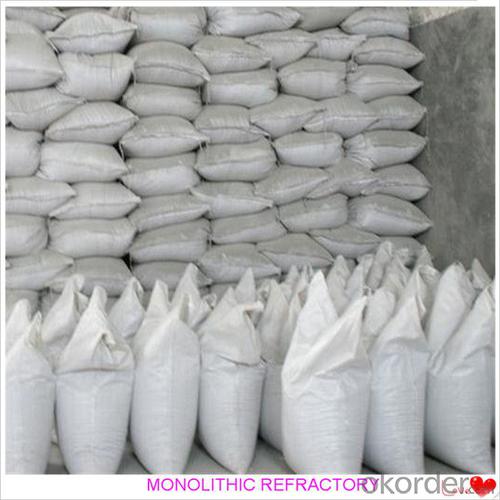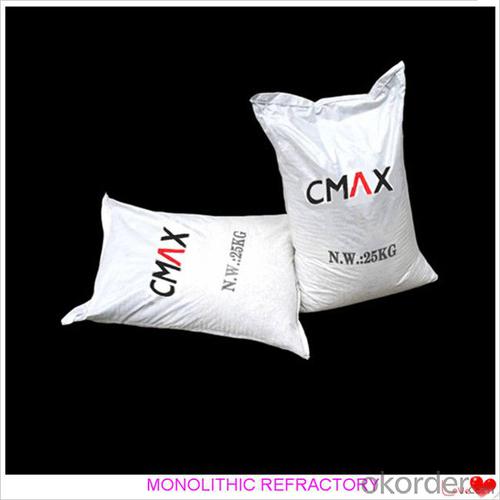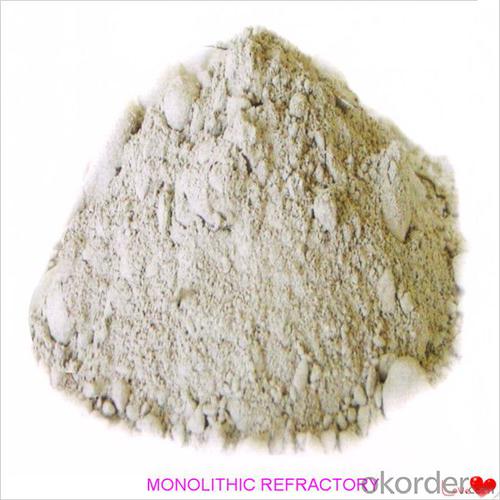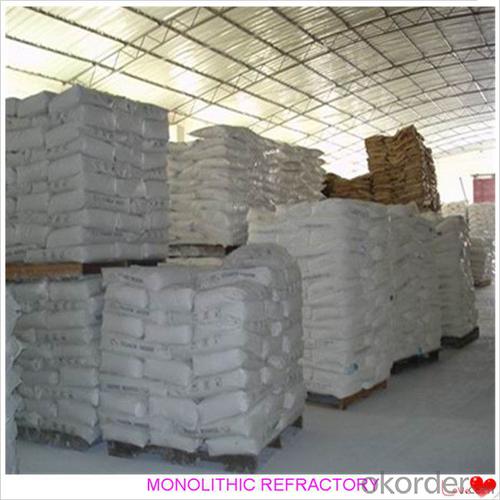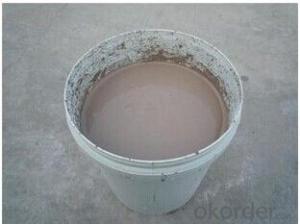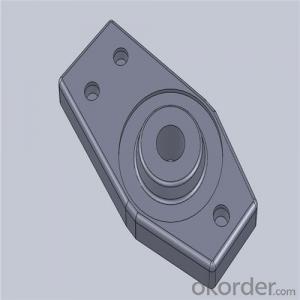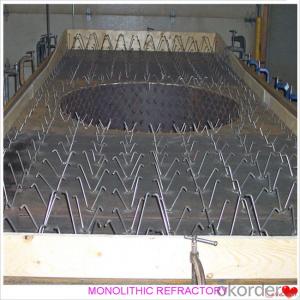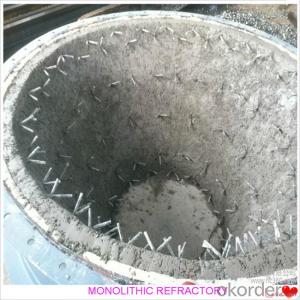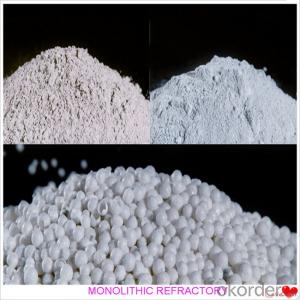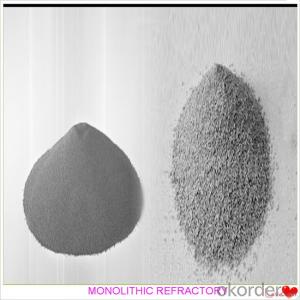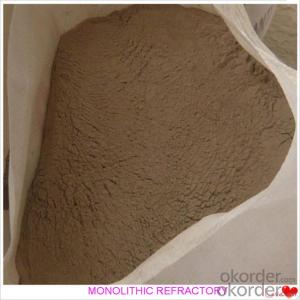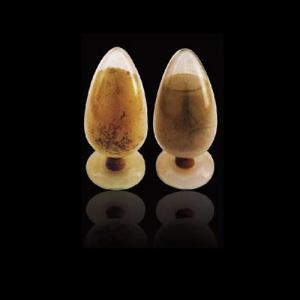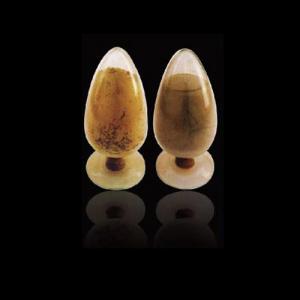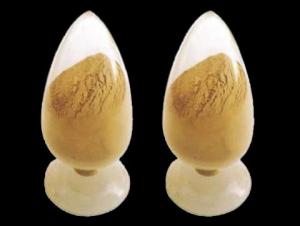Monolithic Refractories for Iron and Steel Industry - Fireclay Castable for Fireplace and Industrial Furnace
- Loading Port:
- China main port
- Payment Terms:
- TT OR LC
- Min Order Qty:
- 1000 kg
- Supply Capability:
- 3000000 kg/month
OKorder Service Pledge
OKorder Financial Service
You Might Also Like
Fireclay Castable For Fireplace and Industrial Furnace in Iron and Steel
Product Description:
Fireclay Castable is manufactured according to international standards. The product is famous for its excellent abrasion resistance and low thermal conductivity. Further, these can be provided in different specifications as required by the clients. The Fireclay Castables are used high purity raw materials and additives as the main material, and made of under superfine powder adding technology.
Product Advantages:
The material has excellent structural stability and air tightness, and has high physical and chemical properties, also has a fine working ability.They should be used with the same material products.
Product Applications:
For feature of Fireclay Castable, they have excellent abrasion resistance, thermal shock resistance, high-temperature resistance, anti-corrode and have high intensity.
Designed for refractory lining of blast furnace iron and slag runners, skimmers and soon
They can be used in troughs of small and mid size BFs and in all positions of the troughs where fast tapping is required.
Product Specifications:
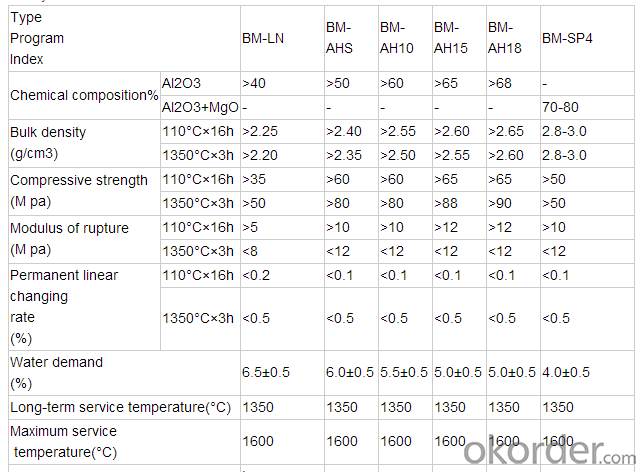
FAQ:
1. How you can control your quality?
For each production processing, we have complete QC system for the chemical composition
and Physical properties. After production, all the goods will be tested, and the quality certificate
will be shipped along with goods.
2. What's your delivery time?
It usually needs about 20days- 45 days after receiving the deposit.
3. Do you provide free samples?
Yes, we can provide a free sample for testing, If we have sample in stock,
The quantity based on the material type, The buyer should bear all the shipping costs.
4. What's your payment terms?
We can accept 30% deposit, 70% balance before shipment for ordrs over $ 2000.
5. Can we visit your Company?
Yes, certainly. You are very welcome to China and we will be honored to have a customer and friend.
Product Picture:
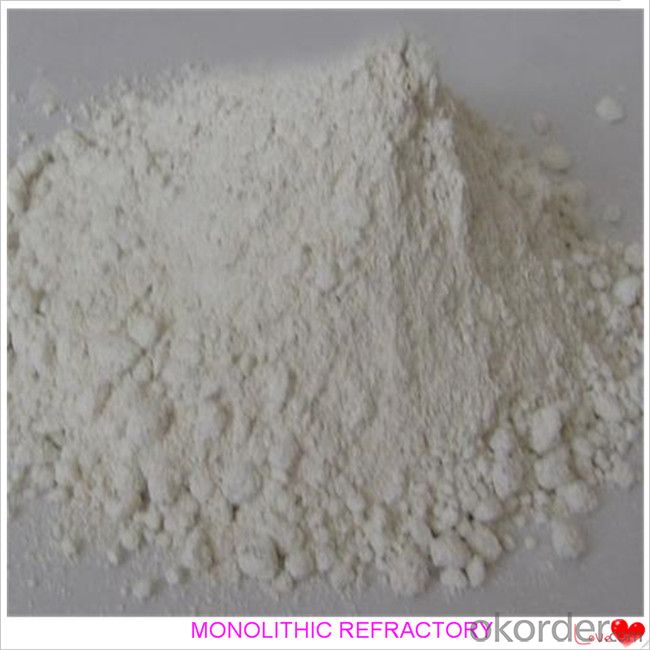
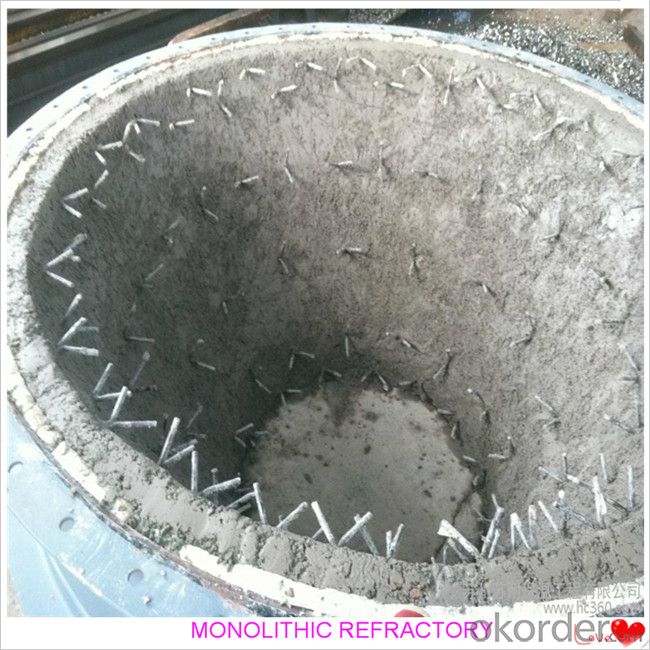
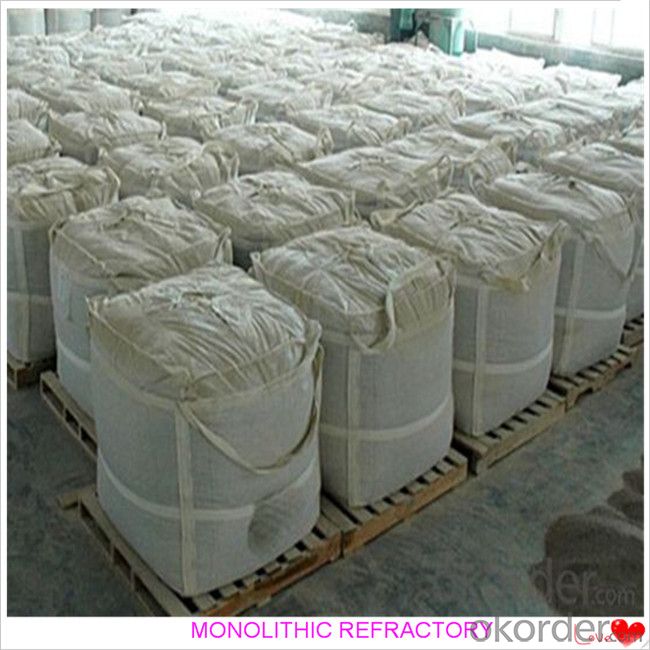
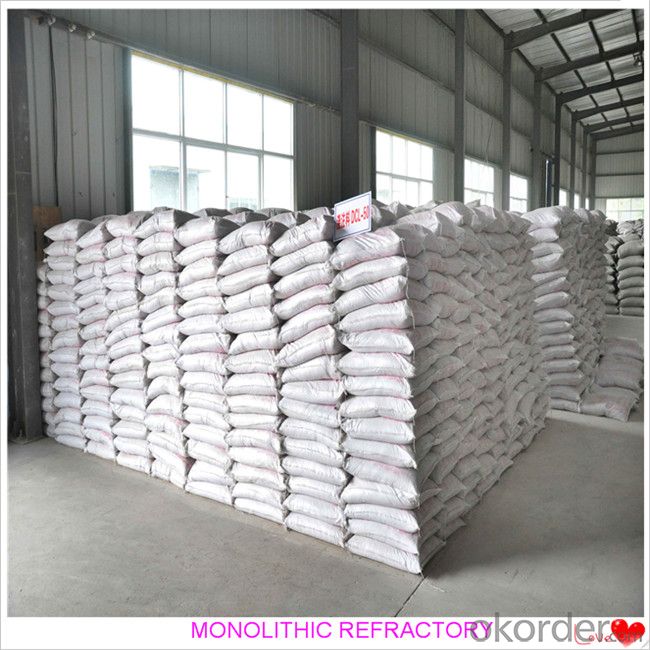
- Q: How do monolithic refractories protect lining in ladles and tundishes?
- The unique properties and characteristics of monolithic refractories are crucial for protecting the lining in ladles and tundishes. Unlike traditional brick or tile linings, which consist of individual units, monolithic refractories are composed of a single, solid piece. One way in which monolithic refractories protect the lining is through their high density and low porosity. This ensures that the refractory material acts as an effective barrier against the penetration of molten metal and slag. By preventing the infiltration of these corrosive substances, the monolithic refractory shields the lining from chemical attack, ensuring its longevity and performance. Moreover, monolithic refractories exhibit excellent thermal shock resistance. The extreme temperature fluctuations experienced by ladles and tundishes during the steelmaking process can cause cracking or spalling. However, monolithic refractories are able to withstand these rapid temperature changes without damage, protecting the lining from thermal harm. Additionally, monolithic refractories offer superior strength and mechanical properties. Ladles and tundishes face various mechanical stresses, such as the weight of the molten metal and the movement of the refractory lining during pouring. The robustness of monolithic refractories allows them to withstand these forces, preventing any structural failure or damage to the lining. Another advantage of monolithic refractories is their ease of installation. Unlike brick or tile linings, which require meticulous jointing and careful placement, monolithic refractories can be applied as a single, cohesive layer. This seamless application ensures a uniform protective barrier, eliminating weak points or gaps that could compromise the lining's integrity. In conclusion, monolithic refractories play a vital role in protecting the lining in ladles and tundishes. Their dense, impermeable nature prevents the penetration of molten metal and slag, while their thermal shock resistance, mechanical strength, and easy installation contribute to the overall durability and longevity of the lining, ensuring its effective performance in the demanding steelmaking environment.
- Q: What are the common failure modes of monolithic refractories in iron and steel applications?
- Monolithic refractories, known for their exceptional thermal shock resistance, high temperature stability, and mechanical strength, find extensive use in iron and steel applications. However, like any other material, they are susceptible to failure. Numerous failure modes are associated with monolithic refractories in iron and steel applications. 1. Spalling, the detachment of refractory material from the surface, stands as one of the most prevalent failure modes. This detachment occurs due to thermal cycling, mechanical stress, or chemical reactions. Mismatched thermal expansion coefficients between the refractory and the surrounding structure can lead to cracking and subsequent detachment. 2. Erosion, another common failure mode, arises when the refractory material encounters the erosive action of molten metal, slag, or gases. Physical impact from flowing metal or chemical attack by corrosive slag components can contribute to erosion. This results in the loss of refractory material, reduced lining thickness, and compromised performance. 3. Corrosion, a significant failure mode, particularly affects iron and steel applications in contact with aggressive atmospheres or molten metal. The interaction between the refractory material and corrosive agents, such as oxides, sulfides, or alkalis present in the environment, leads to corrosion. Corrosion products weaken the refractory lining and shorten its lifespan. 4. Thermal shock, caused by extreme temperature fluctuations, poses a risk to monolithic refractories in iron and steel applications. Rapid heating or cooling can trigger thermal shock, resulting in cracking and failure of the refractory material. Thermal shock can occur due to uneven heating or cooling, sudden temperature changes, or thermal gradients within the refractory lining. 5. Abrasion is a potential failure mode in specific iron and steel applications, where monolithic refractories are exposed to abrasive wear. This wear occurs when the refractory lining comes into contact with solid particles like metallic oxides, slags, or raw materials. The repeated impact and rubbing action of these particles cause erosion and abrasion of the refractory material, leading to failure. To mitigate these failure modes, it is crucial to select appropriate refractories, employ proper installation techniques, and practice regular maintenance. Regular inspections, repair of damaged areas, and the application of protective coatings can greatly enhance the lifespan and performance of monolithic refractories in iron and steel applications.
- Q: How do monolithic refractories contribute to the overall efficiency of ladle refining processes?
- Monolithic refractories play a crucial role in enhancing the overall efficiency of ladle refining processes. Ladle refining is a critical step in steelmaking, where impurities are removed and alloying elements are added to achieve the desired steel properties. Monolithic refractories, which are unshaped refractory materials, offer several benefits that contribute to the efficiency of this process. Firstly, monolithic refractories provide excellent thermal insulation. Ladle refining processes involve high temperatures, and the refractories' ability to withstand and contain these temperatures is vital. Monolithic refractories have low thermal conductivity, which minimizes heat loss from the ladle. This insulation helps maintain the desired temperature within the ladle, allowing for efficient refining and reducing the energy required for heating. Secondly, monolithic refractories have high resistance to chemical attack and erosion. During ladle refining, the steel is exposed to various chemical reactions and corrosive elements. Monolithic refractories are designed to withstand these harsh conditions, protecting the ladle from chemical attack and erosion. This resistance ensures that the refractories maintain their structural integrity, preventing any contamination of the steel and extending the lifespan of the ladle. Moreover, monolithic refractories offer easy installation and repair. Unlike traditional brick refractories, monolithic refractories can be applied as a single, homogeneous layer, eliminating the need for complex bricklaying techniques. This ease of installation reduces downtime during ladle maintenance and repair, improving the overall efficiency of the refining process. Additionally, monolithic refractories can be easily patched or repaired as needed, further reducing downtime and ensuring continuous operation. In conclusion, monolithic refractories contribute significantly to the overall efficiency of ladle refining processes. Their exceptional thermal insulation properties, resistance to chemical attack and erosion, and ease of installation and repair all play a vital role in enhancing the efficiency and productivity of ladle refining. By providing a reliable and durable lining for the ladle, monolithic refractories help maintain the desired temperature, prevent contamination, and minimize downtime, ultimately improving the quality and yield of the refined steel.
- Q: How does the composition of monolithic refractories impact their performance?
- Determining the performance of monolithic refractories is heavily influenced by their composition. These refractories are unshaped materials used to line furnaces, kilns, and other high-temperature equipment. Their installation convenience and ability to conform to complex shapes make them preferable over traditional brick and mortar refractories. Various components, such as aggregates, binders, and additives, constitute the composition of monolithic refractories. These constituents significantly impact the physical, mechanical, and thermal properties of the refractory material. Aggregates, which are the primary component, provide structural integrity to monolithic refractories. Alumina, silica, magnesia, and carbon are among the materials used for aggregates. Each aggregate possesses unique properties that determine the refractory's resistance to heat, chemical attack, and mechanical stress. For instance, alumina aggregates offer excellent resistance to high temperatures and chemical corrosion, while carbon-based aggregates have high thermal conductivity and are preferred for this reason. The addition of binders enhances the strength and cohesion of the refractory. Common binders include clay, calcium aluminate cement, and colloidal silica. The choice of binder depends on the desired strength, workability, and setting time of the refractory material. Additives are incorporated into the composition to improve specific properties. They can enhance the refractory's resistance to thermal shock, abrasion, or chemical attack. Additives like zirconium oxide, silicon carbide, and graphite are frequently used to enhance the performance of monolithic refractories in specific applications. The proper combination and proportion of these constituents are vital for achieving the desired performance of monolithic refractories. The composition affects the refractory's thermal conductivity, thermal expansion, density, porosity, and chemical resistance. For example, a higher alumina content improves resistance to high temperatures and chemical corrosion, while a higher silica content enhances insulation properties. In conclusion, the performance of monolithic refractories is significantly impacted by their composition. Careful consideration must be given to the selection of aggregates, binders, and additives to achieve desired properties and ensure optimal performance in specific high-temperature applications.
- Q: How do monolithic refractories resist corrosion from molten metals?
- Monolithic refractories resist corrosion from molten metals due to their inherent chemical composition and physical properties. These refractories are made using high-quality materials that possess excellent resistance to chemical attack and high temperatures. They are designed to have a dense and compact structure, which helps in preventing the penetration of molten metals and minimizing the reaction between the refractory and the metal. Additionally, monolithic refractories often contain additives or binders that enhance their resistance to corrosion, making them highly effective in withstanding the aggressive nature of molten metals.
- Q: What are the main factors affecting the corrosion resistance of monolithic refractories?
- The main factors affecting the corrosion resistance of monolithic refractories include the chemical composition of the refractory material, the temperature and atmosphere in which it operates, the physical properties of the refractory such as porosity and permeability, and the presence of impurities or aggressive agents. Additionally, the design and installation of the refractory lining, as well as the operational practices and maintenance of the system, can also impact its corrosion resistance.
- Q: What are the considerations for repairing and patching monolithic refractories?
- Considerations for repairing and patching monolithic refractories include assessing the extent of the damage, identifying the cause of the damage, selecting the appropriate repair material, ensuring proper bonding and curing, and following manufacturer's instructions and recommended procedures. Additionally, factors such as temperature, chemical exposure, and mechanical stress should be taken into account to ensure the repaired refractory maintains its performance and longevity.
- Q: What are the key properties and characteristics of monolithic refractories?
- Monolithic refractories, renowned for their ability to be shaped or installed in a single piece without joints, are a type of refractory material. They find their utility in high-temperature applications where traditional brick or tile refractories may not suffice. One noteworthy attribute of monolithic refractories lies in their superior thermal stability. They can withstand extreme temperatures without significant expansion or contraction, making them an ideal choice for furnaces, kilns, and other heat-intensive environments. This quality ensures the maintenance of their structural integrity and grants long-lasting performance. Another significant characteristic of monolithic refractories is their high resistance to thermal shock. They can endure abrupt temperature changes without cracking or spalling, a crucial aspect when the refractory material is exposed to alternating hot and cold conditions. The resistance to thermal shock ensures the refractory lining's longevity, reducing the need for frequent repairs or replacements. Monolithic refractories also demonstrate commendable mechanical strength, enabling them to withstand the mechanical stresses and loads imposed on them during usage. They possess excellent load-bearing capacity, resisting abrasion, erosion, and impact, making them suitable for applications where the refractory material faces mechanical wear or impact. Moreover, monolithic refractories offer the advantage of easy installation and repair. Unlike traditional refractories that necessitate skilled labor and time-consuming bricklaying techniques, monolithic refractories can be cast, gunned, or sprayed into place. This effortless installation expedites turnaround times and minimizes downtime during repairs or maintenance. Lastly, monolithic refractories exhibit commendable chemical resistance to various corrosive agents, such as acids, alkalis, and molten metals. This property renders them suitable for use in industries where the refractory material encounters aggressive chemical environments, including the steel, petrochemical, and glass industries. In summary, monolithic refractories possess excellent thermal stability, high resistance to thermal shock, good mechanical strength, effortless installation and repair, and commendable chemical resistance. These properties establish them as the preferred choice in high-temperature applications where durability, reliability, and performance are of utmost importance.
- Q: How do monolithic refractories improve the performance of iron and steel furnaces?
- Monolithic refractories play a crucial role in improving the performance of iron and steel furnaces in several ways. Firstly, these refractories provide excellent thermal insulation, which helps to maintain a stable and high temperature inside the furnace. This is important because the production of iron and steel requires extremely high temperatures for efficient melting and refining processes. Secondly, monolithic refractories have high resistance to thermal shock and can withstand rapid temperature changes without cracking or spalling. This is particularly important in iron and steel furnaces, where the temperature can fluctuate greatly during operations. By withstanding thermal shock, these refractories ensure the longevity of the furnace lining, reducing maintenance and downtime. Furthermore, monolithic refractories have excellent resistance to chemical attacks from the molten metal and slag in the furnace. The production of iron and steel involves the use of various chemical agents that can corrode and erode the lining of the furnace. Monolithic refractories offer superior resistance to these chemical attacks, ensuring the integrity of the furnace lining and preventing contamination of the metal being produced. Additionally, monolithic refractories have excellent mechanical strength and abrasion resistance. This is important as they are subjected to mechanical stresses and wear from the movement of materials inside the furnace, such as charging and tapping operations. The high mechanical strength and abrasion resistance of these refractories ensure their durability and prolong their service life in iron and steel furnaces. Overall, monolithic refractories improve the performance of iron and steel furnaces by providing superior thermal insulation, resistance to thermal shock and chemical attacks, as well as high mechanical strength and abrasion resistance. These properties contribute to the efficient and reliable operation of the furnace, resulting in increased productivity, reduced maintenance costs, and improved product quality.
- Q: What are the key properties of pumpable refractories used for monolithic refractory applications?
- The key properties of pumpable refractories used for monolithic refractory applications include high flowability, good workability, excellent bonding strength, and high resistance to thermal shock. These pumpable refractories should also possess good pumpability and be able to withstand the intense heat and mechanical stress in the application environment. Additionally, they should have low water demand, high chemical resistance, and the ability to maintain their properties even after exposure to high temperatures.
Send your message to us
Monolithic Refractories for Iron and Steel Industry - Fireclay Castable for Fireplace and Industrial Furnace
- Loading Port:
- China main port
- Payment Terms:
- TT OR LC
- Min Order Qty:
- 1000 kg
- Supply Capability:
- 3000000 kg/month
OKorder Service Pledge
OKorder Financial Service
Similar products
Hot products
Hot Searches
Related keywords

